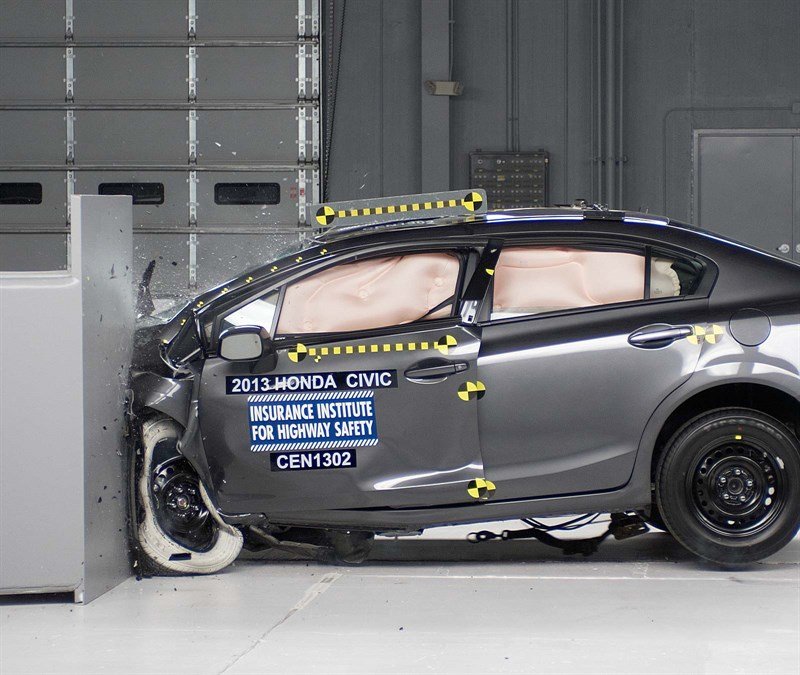IIHS: Drivers Safer Than Passengers In Frontal Crash Test

In the test, vehicles travel at a speed of 64 km/h toward a five-foot-tall barrier with 25 percent of the total width of the car striking the barrier on the driver side. One would assume that vehicles with good small overlap front ratings would protect the driver and the passenger equally. But a recent study from the IIHS proves that passengers aren't as protected as drivers.
The IIHS conducted the test on seven small SUVs with good driver-side small overlap ratings and only one of the vehicles, the 2016 Hyundai Tucson, performed well enough to be given a good rating. The other SUVs performance ranged from poor to acceptable.
After reviewing the results of the test, the IIHS is deliberating whether it should institute a passenger-side rating as part of its Top Safety Pick criteria. "This is an important aspect of occupant protection that needs more attention," states Becky Mueller, lead author of the study and an IIHS senior research engineer. "More than 1,600 right-front passengers died in frontal crashes in 2014."
Since the small overlap front test was introduced, 13 automakers have made structural changes to 97 vehicles with roughly three-quarters earning a good rating after the adjustments. The IIHS' test for frontal ratings is completed with a dummy in the driver's seat and with a barrier overlapping the driver's side. Which makes sense, as passengers aren't always riding in a vehicle.
"It's not surprising that automakers would focus their initial efforts to improve small overlap protection on the side of the vehicle that we conduct the tests on," states David Zuby, IIHS executive vice president and chief research officer. "In fact, we encouraged them to do that in the short term if it mean they could quickly make driver-side improvements to more vehicles. As time goes by, though, we would hope they ensure similar levels of protection on both sides."
As the IIHS' test revealed, there's a massive difference in safety between the two front seats. Increase passenger safety, according to Mueller, would require automakers to strengthen the occupant compartment by using a different type of material or by making it thicker. The IIHS could force automakers' hands by adding passenger-side small overlap ratings and making it a requirement for one of its coveted safety awards as early as 2018.
Nouvelles connexes


